The terms employee and team member have become almost interchangeable in recent years. But it’s important to understand the real difference between the two words because it’s more than just terminology. A team reflects one kind of company culture — accountable, engaged and goal-oriented — and an employee/employer relationship represents another kind — transactional and Read more
Industry Blogs

The terms employee and team member have become almost interchangeable in recent years. But it’s important to understand the real difference between the two words because it’s more than just terminology.
A team reflects one kind of company culture — accountable, engaged and goal-oriented — and an employee/employer relationship represents another kind — transactional and uninspired. One of these cultures supports growth and innovation; the other leads to mediocre results and stagnation.
Which one describes your company?
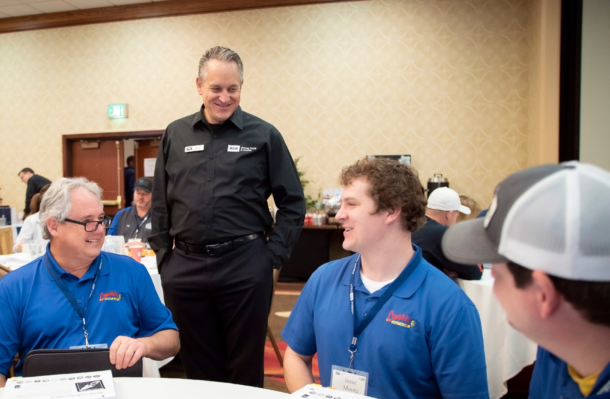
Employees vs. team members
The difference between an employee and team member is subtle. But it’s a crucial distinction and essential knowledge for leaders in the skilled trade industries, where acute labor shortages keep recruiting and retention intensely competitive.
Employees
- Go to work for a paycheck.
- Do exactly what’s expected of them — but no more.
- Don’t invest their own ideas or initiative.
- Won’t positively reinforce your brand outside of work.
- Likely to frequently leave one job for another.
- Overlook details and lack accountability which can lead to major oversights.
Team members
- Recognize they are part of something bigger than themselves.
- Get paid to do what they’re passionate about.
- Foster new ideas and drive innovation.
- Serve as ambassadors for your brand with customers, friends and family.
- Create institutional continuity and act as positive role models for other team members.
- Work together toward a single goal and usually get more done in less time with fewer mistakes.
It doesn’t take long for the differences to add up. The costs to your company come in many forms, with rollbacks, dissatisfied customers, damaged reputation and missed opportunities among them. When an employee leaves your company for a $1 an hour raise across town, you’re left with the cost of hiring and training their replacement.
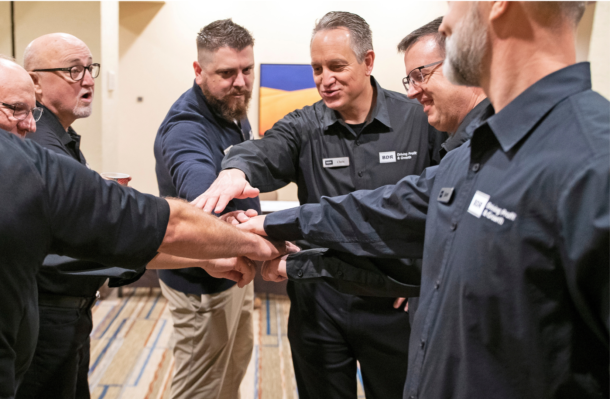
Building your team
When it comes to recruiting and developing team members vs. employees, it isn’t as simple as just switching out one job title for another. Team members need a team. It’s up to you to build your company with a solid mission that gives prospective team members reasons to join and stick with you. Here are some key concepts to incorporate at your company in building and transforming your team:
- Communication: This goes both ways. Keep lines of dialogue open so team members can share their ideas. It’s also important to communicate clearly with team members so they know what’s expected and what goals they’re working toward.
- Celebration: From a quick shout-out when you see small things done the right way to bonus pay, don’t let superior performance go unrecognized. Build in big incentives for motivation, take time for regular call-outs and encourage team members to cheer each other on.
- Culture: Don’t let “team” be a buzzword at your company. The people who work there know the difference, no matter what you call it. When they feel valued at work it gets passed on to customers. When they don’t feel valued, that’s passed on, too. Create an authentic team concept by intentionally investing in your team and the resources they need for success.
Put it all together
Teamwork is no longer an option for contractors. With the emergence of Generation Z and the deep economic impact of COVID-19 paired with other supply chain and labor issues, a passion and dedication for team culture is required for success in home services.
A real team is built on vision, values and mission. If you’re committed to living all those every day and being accountable, the people around you recognize it. Talk to your team, encourage them to buy in and you’ll see the difference.
 Chris Koch is Head Coach and Trainer for Business Development Resources – the premier provider of business training and coaching to home service contractors across North America.
Chris Koch is Head Coach and Trainer for Business Development Resources – the premier provider of business training and coaching to home service contractors across North America.
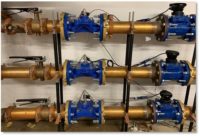
As a leading global construction company, Tidhar’s success relies on the company’s reputation for quality and customer satisfaction. The dynamic international real estate group employs a unique combination of entrepreneurial, planning and execution capabilities, advanced management concepts, and uncompromising quality and service to develop, build and operate residential and commercial projects around the world. Challenge Read more
As a leading global construction company, Tidhar’s success relies on the company’s reputation for quality and customer satisfaction. The dynamic international real estate group employs a unique combination of entrepreneurial, planning and execution capabilities, advanced management concepts, and uncompromising quality and service to develop, build and operate residential and commercial projects around the world.
Challenge: Unfortunately, Tidhar, like many other construction firms, has been frequently challenged by leaks and water damage on jobsites. The company’s management was determined to put an end to the costs of property damage and remediation, the delivery delays and the impact of water leaks on customer satisfaction.
Additionally, the company sought tools to support its commitment to enhancing sustainability in the construction industry. Reducing water waste on building sites not only helps Tidhar save customers time and money; it also offers opportunities to incorporate long-term sustainability measures and establishes Tidhar as a pioneer in the evolution of sustainable construction practices.
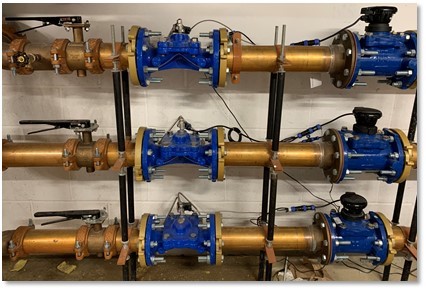
Tidhar needed a solution that would mitigate damage from water leaks and even eliminate the risk altogether. The ideal solution would detect leaks, alert staff, and automatically shut water off to prevent damage. It would need to function during all project phases and continue operation regardless of any communication or power infrastructure failures at the site. It had to be adaptable, robust and modular so it could grow with the site as construction progressed.
Solution: WINT is passionate about preventing the hazards and costs associated with water leaks, and about preventing water waste to reduce consumption and ongoing costs. Utilizing the power of artificial intelligence, signal processing, smart auto-shutoff valves and advanced IoT technologies, Water Intelligence units provide an all-in-one solution for organizations looking to eliminate water-leak damage and to reduce ongoing water waste. WINT’s customers include commercial facilities, construction projects and industrial facilities including the world’s leading construction and real-estate companies, facilities management organizations and prominent buildings.
WINT’s advanced solutions track water flows, learn usage patterns and behaviors and identify anomalies in real time. When an issue is detected WINT alerts staff and can automatically shut water off to prevent damage.
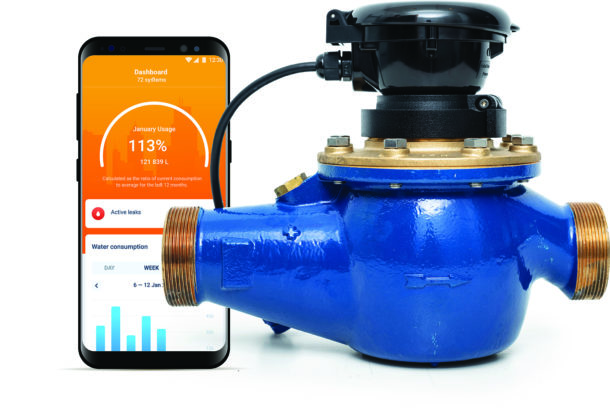
The WINT cloud, portal and mobile application provide maintenance staff with the tools required to manage water on the facility, track usage and control water flow and usage throughout the facility. WINT’s AI-based systems are installed at multiple locations at a site, with devices added to newly constructed areas and floors as the project advances. When the system detects a leak, it alerts staff and can instantly shut off water to the affected area.
Supervisors have the option to choose automated shutoff or an alert-only policy. Site supervisors and managers can remotely view related water-flow data from their mobile devices, and immediately shut-off or activate water flows in real time.
WINT systems can even communicate over the cellular network and be powered by battery, so they can be deployed even before Internet and electrical infrastructure has been installed.
Result: Over the past two years, Tidhar has deployed the WINT solution at over 40 construction projects. These include residential high-rise buildings as well as large, million-square-feet high-tech commercial facilities.
Over this period, Tidhar experienced six shutoff incidents with flow rates up to 500 gallons an hour across its portfolio. Disruptions could be attributed to a defective fitting, a broken hose and a running tap. In each case, WINT technology identified the issue, shut off the water supply and alerted staff, saving the sites from massive damage and delays.
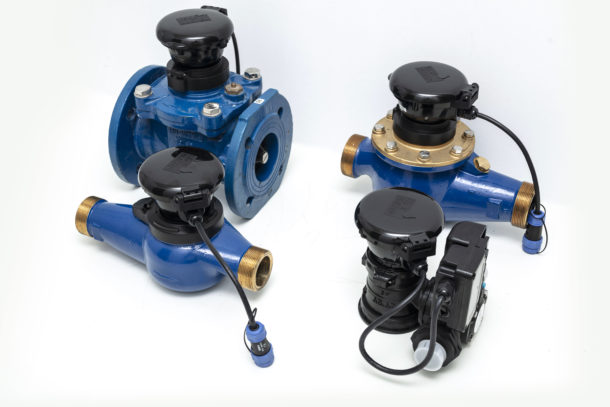
Since deploying WINT, Tidhar has not suffered a single water damage incident. In fact, the company has established WINT as a mandatory standard for all of its construction projects; any exclusion requires formal CEO approval.
“Water damage at construction sites is one of those things that keep construction executives up at night,” said Tidhar CEO Tal Hershkovitz. “The physical damage can be huge and the project delays a nightmare. WINT has made this one less thing to worry about. We sleep better knowing that WINT has an eye on water at our sites.”
Learn more at https://www.WINT.ai or email sales@wint.ai.
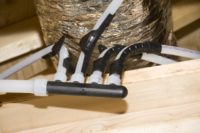
Two directors discuss how switching from PEX-b pipe with crimp-style fittings to Uponor PEX-a pipe with ProPEX® expansion connections made a big impact on their business. Kimbel Mechanical Systems is one of the nation’s preeminent mechanical contractors, specializing in plumbing, HVAC, and electrical work in more than a dozen states on both sides of the Read more
Two directors discuss how switching from PEX-b pipe with crimp-style fittings to Uponor PEX-a pipe with ProPEX® expansion connections made a big impact on their business.
Kimbel Mechanical Systems is one of the nation’s preeminent mechanical contractors, specializing in plumbing, HVAC, and electrical work in more than a dozen states on both sides of the country — from Montana to Massachusetts. Headquartered in Fayetteville, Ark., Kimbel currently maintains 12 regional offices, including six in Arkansas, three in Colorado, and one each in Tennessee, Missouri, and Oklahoma.
The company was originally established as a one-person, new-residential plumbing shop in 1984 in northeast Ohio. A decade later, founder Miles Kimbel relocated and reconstituted his firm 900 miles southwest to pursue new opportunities in Arkansas. Fast-forward a few more years, and Miles’ son Rob Kimbel took over the reins, broadening the company’s reach to include mid- to large-scale multifamily projects, as well as single-family residential.
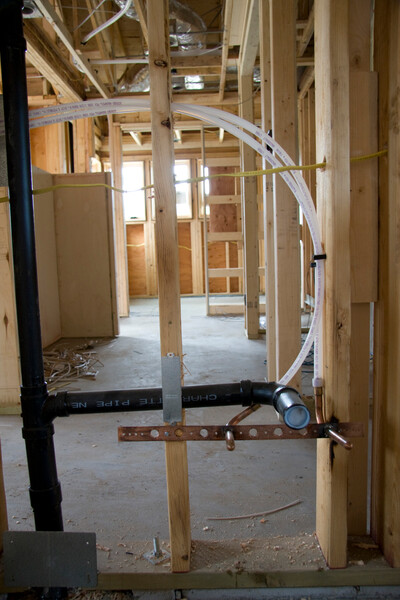
Residential plumbing with Uponor PEX-a and ProPEX fittings.
While the residential side of the business is still mainly involved in single-family work, the commercial side encompasses multifamily projects, hotels, schools, military housing, assisted-living facilities, and other types of large-scale structures. The company’s total number of employees exceeds 500, and they also rely on a large pool of subcontractors for their commercial work.
Several years ago, directors in both halves of Kimbel’s business found themselves struggling with “huge” and mounting warranty problems caused by damaging pipe leaks — damaging to the properties in which the product had been installed, as well as to the company’s professional reputation.
As a result, they decided to begin transitioning away from PEX-b pipe with crimp-style fittings and start using Uponor PEX-a pipe with ASTM F1960 ProPEX® expansion connections for their plumbing projects.
Hear Kimbel’s journey firsthand from Ryan Pinkerton, Director of Operations in Colorado and Tennessee, along with his colleague Mark Evans, Director of Pre-Construction – Commercial Housing, as they detail the factors that drove the company-wide shift, as well as the beneficial impact Uponor PEX-a and the ProPEX expansion method have subsequently had on both sides of their business.

Residential plumbing with Uponor PEX-a and ProPEX fittings.
Residential: Ryan Pinkerton, Director of Operations, Colorado and Tennessee
What is the primary piping product your company uses?
PEX is the known method among the single-family homebuilders we work with today. We might use Schedule 80 CPVC for pipe runs larger than two inches — mains and so forth. But, the majority of our single-family housing work is PEX.
How long have you been using PEX?
We began using PEX not long after I entered the plumbing trade 15 years ago. At that time, for our residential work, we were using PEX-b from another brand. However, we were having so many leaks with the crimp-style connections.
What were some of the issues you encountered with PEX-b crimp connections?
Over-calibrating was an issue. Because you can over-calibrate crimpers, it created a weak spot in the fitting that can crack under use. Also, if you position the crimp ring too far back, it can hold under the air test, but blow off when you turn on the water. The problems were huge, ongoing, and cost us hundreds of thousands of dollars in repairs.
Why did you switch to Uponor PEX-a pipe and the ProPEX® fitting system?
We needed to decrease our warranty costs to repair crimp connections as well as improve the relationships with the homebuilders we served. We also liked the increased water flow that the Uponor system provided. Crimp-style connections reduce the diameter of the PEX-b pipe and, as a result, lower the flow rate. That’s not the case with the ProPEX expansion-type fitting on PEX-a pipe. That has been a key, positive factor for us with the switch.
Commercial: Mark Evans, Director of Pre-Construction – Commercial Housing
Why did your commercial team choose to make the switch?
We use contract installers, and we had so many different people doing the work, it was hard to maintain quality with crimp. The Uponor ProPEX expansion method and the simplicity of the expansion tool for making PEX-a connections worked a lot better for us.
Were there issues with other piping products?
We had numerous leak issues with our larger water mains where we used CPVC at the time. CPVC joints are only as good as the installer who glues them. Once we learned Uponor offered PEX-a in larger diameters, that opportunity to reduce our water-main leak problems also helped drive the switch to Uponor.
Was it difficult for your workers to switch?
Uponor came to our job sites to train our crews on the ProPEX connection method. This training was quick and simple. Once we got everyone on board, the leaks went down drastically. Additionally, our contract plumbing installers are now faster and more productive with Uponor PEX-a. Although most of our contract installers work only for us, we still pay them for piecework. As a result, installation speed really matters for these independent contractors. They know that if you are not fast, you are not profitable. Thanks to the training they received, these contract installers are now familiar working with PEX-a. They have learned to install it quickly without mistakes.
To learn more about Uponor training opportunities for your team, visit uponor.com/training. To learn how Uponor can help bring greater productivity and performance to your residential or commercial projects, visit uponor.com.

When you think about the issue of sustainability in business marketing, you may think of how it connects to Fortune 500 companies that have businesses that reach around the globe. The reality is that sustainability is an issue that is of great importance to many people and impacts the way they choose the products and Read more
When you think about the issue of sustainability in business marketing, you may think of how it connects to Fortune 500 companies that have businesses that reach around the globe. The reality is that sustainability is an issue that is of great importance to many people and impacts the way they choose the products and services they will pay for. It does not matter if it is a service that is offered by a multinational company or a local plumber. For this reason, even small businesses and one-person operations need to show that they pioneer sustainable business practices.
Showcasing Sustainability for Trade Marketing Success
As a tradesperson, you have worked hard to develop your craft and to build your reputation. However, in this current market, being a good craftsman or having a good product is not enough to win customer favor. Your clients will want you to do quality work, but they are also going to want to know that the tools you use, the products you use, the systems you use, and the way you handle any trash or debris align with their stand on environmental values.
If you can prove that your company stands for an environmental purpose, you will attract more customers. That is because, in today’s business climate, customers want to work with businesses that promote sustainability.

More Than Just a Buzzword
A few years ago, sustainability was a buzzword that you would hear thrown about haphazardly. This was true if you were discussing economic, social, or environmental sustainability. Today, people, and especially millennials, have keyed in on what sustainability means. For them, it means having processes and knowledge to exist continually.
When it comes to marketing your plumbing company, HVAC company, or framing company, you need to show the steps that your business is taking to proceed endlessly. What is meant by that is you need to show how your business is using resources wisely so that both your business and the environment can endure.
You need to show how your business will meet your customer’s needs today while not compromising the future generation’s ability to fulfill their needs. It is all about making your marketing and sustainability run parallel to each other.
Sustainability needs to be discreetly woven through everything you do, including your social media posts, your website, and your email newsletters. Customers must walk away with the feeling that your organization respects the environment and the social aspects around you. You can show this by using and promoting products and services that don’t harm the environment. Showcase the techniques your organization uses that are environmentally friendly.
For it to be successful, your sustainable marketing cannot be done in an ironic, sarcastic, or fantastic way. People have a good nose for fake things. When it comes to environmental issues and sustainability, people do not like to be pandered to. If your organization promises that they are going to build a building or do a remodel sustainably and then contractors or technicians are not using sustainable processes, your reputation could be irrevocably damaged.
Employing Sustainable Marketing Principles
Sustainability starts with customer-oriented marketing. This means viewing your organization and its activities from the perspective of your customers. Only by understanding the way your customers view environmental issues can you create long-term relationships with them.
You want to transmit the idea that your company is socially responsible and that you have found a way to do socially accountable activities profitably. This means that your mission should be defined in broad social terms instead of narrowing it to the products or services you offer.
Conclusion
Integrating sustainable marketing is a crucial business strategy for the trade industry. First and foremost, sustainability is about the survival of the human race. Second, it is about the survival of your business.
The business ecosystem is constantly changing. This requires people to adapt to and anticipate what is next. This means adding sustainable marketing to your overall marketing campaign. The last thing that you want is to see rival companies making moves toward sustainability before you. If that happens, it could seem like your move toward sustainability is either an effort to copy your competition or being done to make money.
 Author Bio: Victoria Smith is a freelance writer who specializes in business and finance, with a passion for cooking and wellness. She lives in Austin, TX where she is currently working towards her MBA.
Author Bio: Victoria Smith is a freelance writer who specializes in business and finance, with a passion for cooking and wellness. She lives in Austin, TX where she is currently working towards her MBA.

“You called the right place! How can we make you smile?” See how easy it was to catch your attention with a simple greeting? You would be surprised how often a simple acknowledgment of the customer will improve an online review. When working in the home service industry, customer service is your brand. It’s what Read more
“You called the right place! How can we make you smile?”
See how easy it was to catch your attention with a simple greeting? You would be surprised how often a simple acknowledgment of the customer will improve an online review. When working in the home service industry, customer service is your brand. It’s what people remember about you long after a job is completed. It’s the thing that can help drive your business to the next level.
As service providers, it is important to realize that, in today’s world, communicating with your customer directly, has become a necessity. With people finally getting a chance to converse face-to-face after a long period of strict social distancing guidelines, the customer wants to get to know you. No longer can we as service providers hide behind the bag in 2021. Which means it’s the perfect season for sharpening our soft skills such as controlling voice patterns and body language now that we are spending more time face to face. These skills are vital when communicating with customers.
Communicating with a customer is about building professional trust. When a customer feels that you have listened to them and understood what they need, they trust that you can accomplish the job and that expectations are clear. That is when the skills we’ve mastered as service providers come into play, and we follow through with what we promised our customers. This allows your team to ask the customer for additional and referral business, as well as that five-star review that will help create credibility online.
The Wow Factor
The No. 1 rule of any service provider is to go above and beyond expectations. We call this the “wow factor.” The wow factor is doing something extra without expectation; meaning don’t tell the customer you’re going to do it as part of the job. Instead, tell them you did it to say, “thank you.” These don’t have to be major jobs either. It can be as simple as changing air filters when repairing an HVAC unit. The key to this is to start the job the customer paid you to do, add something extra to the deal and then let the customer know at the end. Effectively communicating this is also paramount. Don’t make it look like the extra job was a hassle. Use proper body language and tone to show the customer you were excited and happy to do the job. The technician needs to list this “wow factor” on their invoice at full price then discount it off showing the customer that you are saying “thank you” by going ahead and covering that expense today.
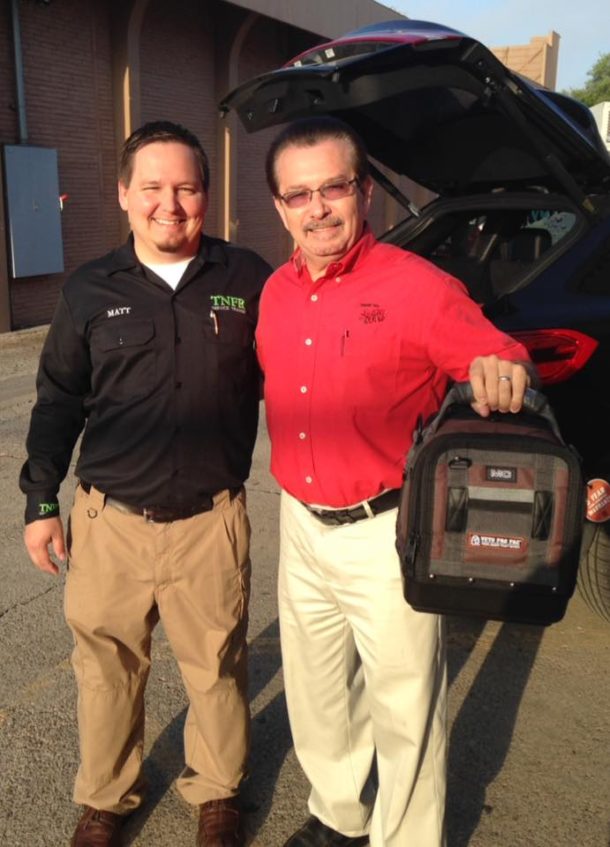
The Good, The Bad, The Lost Customer
It’s funny. Research shows us that the No. 1 reason a customer leaves any company and finds a replacement is a lack of customer service. When there is poor communication, the customer doesn’t feel that he or she has been truly heard. Customer service is about communicating with the customer in a simple form and ensuring they know you’re listening. Using soft skills to keep the customer engaged is key. Not only will it reaffirm they are your No. 1 priority, but it will also help avoid potential conflicts with the customer. If they feel listened to and acknowledged, they will become customers for life and begin to send referrals your way.
The Golden 3
So, after all this discussion, you are probably wondering what are the most important soft skills a service provider should understand and master to improve customer service and satisfaction. In my experience, there are three:
- Listening to the customer: Listen to the customer’s whole question before thinking about how you are going to respond. If a customer finishes their entire question and you already know the answer, then there is a good chance you didn’t actually listen. One thing that we have learned is most field staff stop listening to the customer in the first 10 words that are said. Most customers don’t say what they mean until the last 10 words. So, oftentimes technicians think they are working in the right direction, and they’re working on the completely wrong thing. Following this rule helps ensure all parties’ expectations are clear.
- Skillset training, both technical and communications: We are creatures of regression. We automatically lose things that we don’t practice or sharpen. Making sure you are setting time aside as a company for all your field staff to sharpen their technical and soft skills multiple times a week (even if it’s only 15-30 minutes) helps to limit their loss of knowledge.
- The ability to shut up: This is probably the most important skill a field tech can learn. When you ask a customer a question, STOP and wait for their response. When a technician asks a question, they tend to get uncomfortable with the silence. So, the tech ends up asking another question to break the silence, which in turn completely breaks the customer’s train of thought. It’s important to know that when you ask a question and then SHUT UP it may be uncomfortable for you, but it’s not for the customer. It doesn’t register as silence to the customer because they are still processing the information you just presented. So, learn to shut up and let them finish their process…respectfully.
If you can follow these three simple rules and processes, I’m confident you will improve your customer service skills and help retain customers while gaining some new ones, too.
 Matt Koop is Vice President of Training and Implementation for The New Flat Rate, a home service menu-selling system designed to put profit directly into the hands of plumbing, electrical, and HVAC contractors. For more information visit www.thenewflatrate.com or email info@menupricing.com.
Matt Koop is Vice President of Training and Implementation for The New Flat Rate, a home service menu-selling system designed to put profit directly into the hands of plumbing, electrical, and HVAC contractors. For more information visit www.thenewflatrate.com or email info@menupricing.com.
